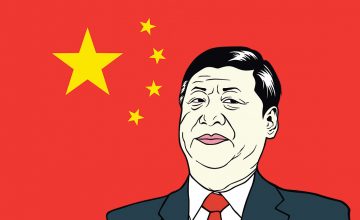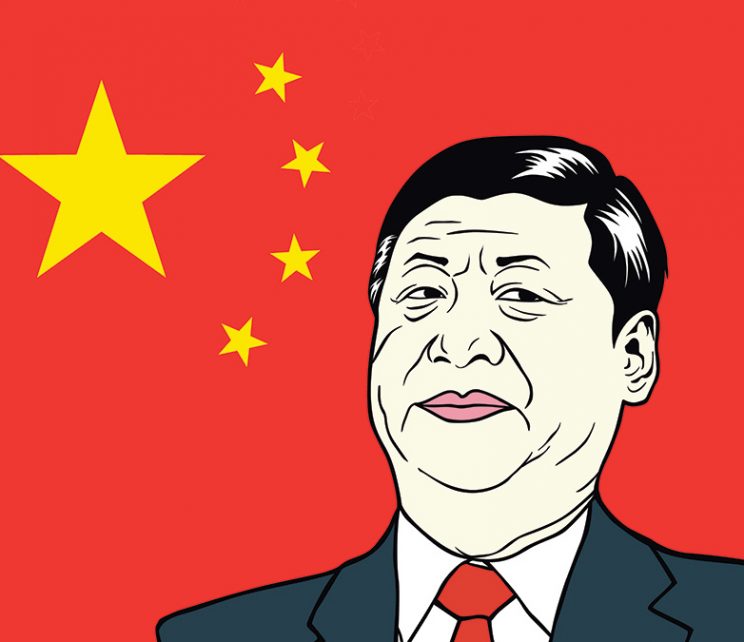
Mainstream Online Web Portal
LoginInvestors can view their accounts online via a secure web portal. After registering, you can access your account balances, periodical statements, tax statements, transaction histories and distribution statements / details.
Advisers will also have access to view their clients’ accounts online via the secure web portal.
The Point
Quick, actionable insights for investors
Australian Equities

Brenton Saunders: ASX mid-caps offer exposure to fast-growing sectors such as battery metals
Australia finally has a national strategy to “encourage greater use of cleaner, cheaper-to-run electric vehicles”.
The new ALP policy, alongside similar plans around the world, should help boost demand for “battery metals” such as lithium, produced by a range of ASX-listed miners.
What’s the best way to get exposure to quality stocks in this sector?
Pendal PM Brenton Saunders argues in favour of Aussie mid-cap portfolios.
Mid-cap portfolios are typically less concentrated and offer access to fast-growing industries such as cloud computing, medical innovation and battery metals.
Medium-sized companies tend to offer higher earnings growth than large-cap companies, often with less risk than small caps, says Brenton.
Brenton manages Pendal MidCap Fund, which invests in the 100 biggest companies outside the ASX50, with market caps ranging from around $1 billion to $10 billion.
“It’s really the sweet spot of corporate Australia. It’s a very useful addition to any balanced portfolio.”
Brenton and Australian lithium industry pioneer Ken Brinsden explained the opportunities in a recent webinar.

Aussie equities: What we can expect from earnings in the second half
Quick view
Aussie equities: What we can expect from earnings in the second half
Australia’s economic cycle has gone on longer than expected – and it showed in the recently ended ASX earnings season.
Somewhat surprisingly, most parts of the economy are still in reasonably good shape despite a string of interest rate rises.
The strong jobs market is a factor, helping prop up consumer spending.
“But the expectation is that higher interest rates will likely hurt earnings in the rest of the financial year,” says Brenton Saunders, who manages Pendal MidCap Fund.
“Across the market as a whole, revenue beats were pretty widespread even though many companies missed earnings forecasts at the bottom line. Revenue beats were much higher than profit beats.
“We saw profit margins reduce and that relates to higher costs. In many cases, despite high product price increases, costs increased at a faster rate, resulting in margin pressure.”

Brenton Saunders: what to watch in ASX earnings season
Quick view
Brenton Saunders: what to watch in ASX earnings season
Company outlook statements will heavily influence share performance in the ASX half-year earnings season, says Pendal’s Brenton Saunders.
Australian listed companies will report results for the December half over the next few weeks.
Reporting season comes against a backdrop of uncertain global macro-economic data which has the markets on edge as investors try to assess the outlook for inflation and interest rates.
“Most of the focus is going to be on the outlook statements rather than the results companies produce on the day, says Brenton, who manages Pendal MidCaps Fund.
Companies with strong retrospective earnings results and weak outlook statements could be sold off by a market “trying understand what 2023-24 will look like”, says Brenton.
“In general, we expect a complicated reporting season and no real trends.”

How long will the ASX keep going? Here are the factors to watch
Quick view
How long will the ASX keep going? Here are the factors to watch
It’s been a strong start to the year for the ASX. What will determine how long it keeps going?
Three things are driving a rapid turnaround from last year, says Brenton Saunders, who leads Pendal MidCap Fund:
- The faster-than-expected re-opening of China
- Signs that inflation is reaching a peak
- Increasing evidence that a hard-landing global recession can be avoided
But there are still clouds over the global economy including the prospect of a downturn later this year and the uncertainty of the Russia-Ukraine conflict.
“This year is probably going to be quite choppy, because we have improving longer-term expectations but still with the prospect of some potentially severe short-term implications.
“We still think there’s a fairly high level of binary risk out there that is yet to be quantified.
“Earnings is still the area that we’re most worried about — ratings are starting to improve but there’s still material risk around earnings.”

Brenton Saunders: What you should really be watching as markets rally
Quick view
Brenton Saunders: What you should really be watching as markets rally
The market’s up since the start of October. How should investors interpret this?
Rallies are a sign the market is looking for a slowdown in rate rises. But investors are better off relying on hard economic data than trying to pick a pivot point, says Pendal’s Brenton Saunders.
With labour markets still strong and inflation rising, it is likely too early to suggest central banks are changing their approach, says Brenton, who manages Pendal MidCap Fund.
“Many of the drivers of inflation continue to run hot — and more importantly headline and core inflation remain stronger than expected.
“The Fed has been incredibly clear in terms of their objectives of getting inflation under control.
“We have no reason to doubt them. It just feels like the market is trying to trough a little early.”
Keep an eye on jobs data and earnings downgrades, especially retail, housing and even resources, says Brenton.

What does Xi Jinping’s consolidation of power mean for investors?
Quick view
What does Xi Jinping’s consolidation of power mean for investors?
Confirmation of Xi Jinping’s third term as China’s leader wasn’t surprising, but his apparent control is greater than most expected.
It appears Xi’s main aim is to turn the “successfully achieved moderately prosperous society” into a “modern socialist society”.
“This is seen as part of China’s ambitions to be an independent technology powerhouse and to project power and influence,” says Pendal’s Brenton Saunders.
“This may suggest the economy remains on a relatively austere pathway by historical standards.
“The potential for China’s property market remains muted. Material stimulus is unlikely beyond the short term.”
That’s a headwind for economic growth and demand for steel-making materials, Brenton says. “Iron ore and coking coal stocks are most exposed to the trend long term.
“But China’s strategic pivot to technology, grid investment and electric vehicles should benefit base metal and lithium-producing companies in the long term.”

Turning point for shares: what to watch
Waiting for a market inflection point?
We asked Aussie equities portfolio manager Brenton Saunders which signs he’s watching.
“One is the Chinese macro-economic outlook,” says Brenton, who manages Pendal MidCap Fund. “It’s unclear, despite some attempts at stimulus, that they are addressing the right areas to reverse that market in any kind of meaningful way.
“Energy policy has also changed gears. We’ve had rumoured sabotage of Russia’s gas pipelines to Europe. That almost assures Europe will have a tougher winter.
“The OPEC agreement to cut supply is the last thing the US Fed wanted and will come as a headwind to getting inflation under control.”
On rates, we may see more rises than the market’s expecting, “and likely higher for longer”.
“We still think we need an earnings downgrade cycle to put a bottom in this market – especially in discretionary retail and possibly commodity cyclicals.”

ASX earnings season: the big talking points
Quick view
ASX earnings season: the big talking points
ASX-listed companies posted better-than-expected full-year earnings, though the averages hid a wide variation in individual results, says Pendal’s Brenton Saunders.
Revenue and dividend “beats” outpaced the misses by around 1.3x. But forward earnings guidance was negative on average.
Inflation, interest rates, labour availability and trade working capital increases were the big talking points in a reporting season that was complicated by a shifting global macroeconomic environment.
“Look for stocks that are either beneficiaries of the move higher in interest rates or those whose business are not overly geared to higher rates and have been heavily sold off year to date,” says Brenton, who manages Pendal MidCap Fund.
The mid-June rally benefitted oversold discretionary retail and long-duration, profitable tech companies, he says.
“It’s very much an alpha kind of environment, where staying across stock specifics is not only useful — it’s an absolute necessity.”

Why mid-caps look good right now
Quick view
Why mid-caps look good right now
Aussie mid-caps are in the sweet spot for equity investors right now, argues Pendal portfolio manager Brenton Saunders.
Midcaps are stocks ranked from 50 to 150 in the S&P/ASX200.
Historically, the mid-cap universe outperforms small caps and large caps in absolute terms and on a risk adjusted basis, says Brenton, who manages Pendal MidCap Fund.
“Mid-caps provide managers with the ability to better hedge portfolios because they can more get equal representation across a broad range of different sectors.
“If one sector is doing poorly, you can offset it from other sectors. You can’t always do that in the large cap space, especially if large sectors like the banks and miners are both doing poorly.”
Mid-caps offer a better better balance of exposure across sectors, says Brenton. That helps manage risk while allowing investors to get focused exposure. And they’re more often M&A targets.

Conservative, pragmatic and style-agnostic: how to think about equities right now
Quick view
Conservative, pragmatic and style-agnostic: how to think about equities right now
“There really is no obvious default for investors in this kind of market,” says Brenton Saunders, who manages Pendal Midcap Fund.
“With macro factors lurching around so quickly, it pays to have a very balanced portfolio.
“Things that once took a year to play out are happening inside a quarter. If you have big macro tilts in your portfolio, you run a big risk of getting it wrong at some stage if you’re not nimble enough.
“We’ve seen an extension of the de-rating of high-multiple, high-growth sectors. We’re now seeing cyclical stocks like commodities getting impacted as well.”
A sensible positioning is to stay conservative, pragmatic and style-agnostic, says Brenton.
“It’s very much a stock-picker’s market. It is really now about understanding a company’s specifics and spending time with a company.
“Even subtle differences in terms of exposures in cost and revenue bases can create quite different outcomes in similar-looking companies.
“It is an environment where research and stock picking are making a difference.”

Good times for stock-pickers as rate-hike cycle arrives
Quick view
Good times for stock-pickers as rate-hike cycle arrives
“For the first time in a while, it’s our sense that 2022 will be less about beta and more about alpha,” says Pendal’s Brenton Saunders.
Wholesale sell-off is creating opportunities for equity investors willing to take a stock-picking approach, says Brenton, who co-manages Pendal MidCap Fund.
“Previous rate hike cycles have been short and sharp — this one will be different.”
This has important implications for asset allocation and sector allocation within equities, he says.
“A lot of the stocks and sectors that were beneficiaries of the huge stimulus we’ve seen through Covid are now starting to battle the impact of higher bond yields and the prospect of higher interest rates down the line.
“We think asset performances will be quite moderate this year and stock selection will be more important than it has been in recent years.”

Head to head: Pendal equities chief Crispin Murray and bonds boss Tim Hext
Play podcastHead to head: Pendal equities chief Crispin Murray and bonds boss Tim Hext
There are a mind-boggling number of issues investors need to stay on top of in 2023.
The potential for recession, the outlook for China, government intervention, the impact of climate change, consumer confidence, population growth, wages, inflation and rates.
And there are differing views on these issues across the investing spectrum.
To cut through the noise and find some answers, our latest podcast brings together two of Pendal’s top investment managers: our head of equities Crispin Murray and head of government bond strategies Tim Hext.
In this special podcast, Crispin and Tim share their views on the issues above as well as their thoughts on portfolio construction and asset allocation in the current environment.
Loading posts...
Loading posts...














